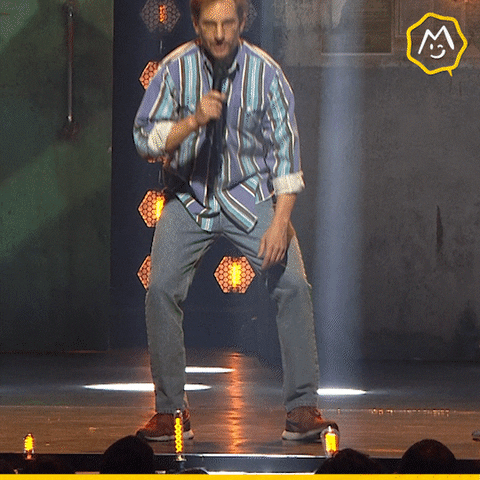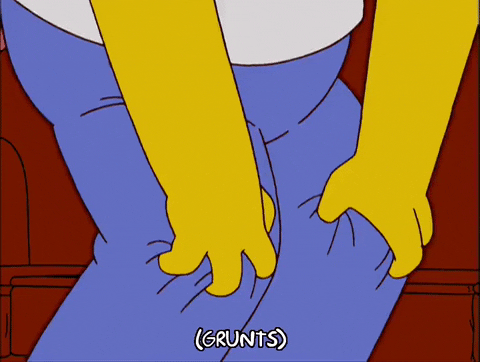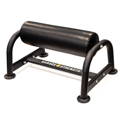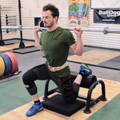Top 5 Squat Variations for Athletes
Top 5 Squat Variations for Athletes
How many techniques can the squat have?
At Garage Strength, athletes like yourself use the high bar back squat, the front squat (with a clean grip or, if your mobility is limited, like a posed genie), the zombie squat (instead of brains, you feed on those gains!!!), the single-leg squat (by the way, get the one piece of equipment you need to perform the single-leg squat exercise at the highest intensities right here!), and finally, at times, especially if you are long-limbed (volleyball athletes and basketball athletes) or a powerlifter, you can perform a low bar back squat.
If you are a long-limbed lifter, you may find you do better with the low bar position. In the end, it is all dependent upon your mechanics, foot position, and athletic goals.
Different types of sports have different needs when it comes to squatting, squat technique, and squat performance. It is dependent on the sport (or sports) you are training for.
Take field sports, like football, soccer, or field hockey. In field sports, you will need more impulse. Impulse is the amount of force applied in a specific, typically incredibly short, time frame. Field sports involve more locomotion and often you have to deal with a lot of contacts.
Power sports, like weightlifting and throwing, need a ton of impulse-based training. If you participate in power-based sports you are used to doing repetitive-based training all the time.
With endurance sports, you will need less impulse-based work or at least less max-effort work. In endurance sports, you do repetitive movements over and over again. It is more about injury prevention.
Combat sports need endurance-based training, but you also need a lot of impulse-based work, along with variability, because of the different positions you hit within the sport.
Racquet sports and court sports need you to train for a lot of short bursts of locomotion, starts stops, and changes of directions.

Types Of Athletes
Field sports athletes come in all shapes and sizes. You may be a field sport athlete, like a football lineman, with short legs and a long torso, making it easy for you to anchor down. You might be a field sport athlete, like a wide receiver or running back, that is long-limbed and makes you so fast. Because of the variation in body types and sizes, you have to consider that variability in training and the technique you use. Field sports athletes also have to focus on dynamic strength and max effort strength.
Power-based athletes, shot putters, discus throwers, and the such, are usually moderately limbed with a standard body type. Still, as a power-based athlete, you have to have absolute strength and dynamic strength, and it has to feed into the lens of what specific squat variations and techniques to use.
With endurance sports, athletes might be gangly, longer, taller individuals with a slight Gumby appeal. If you are an endurance athlete, you might struggle with specific ranges of coordination because of being adverse to resistance-based training. So if you are an endurance athlete and you start to utilize resistance-based training, you have to factor in the long repetitive work that is done to help prevent injury.
Combat athletes are way more compact. You probably also have cauliflower ears. You are also probably able to adapt well, tending to be able to hit different positions with good hip and ankle mobility. Being fed any type of exercise, you adapt pretty well.
Racquet sports and court sports typically have taller athletes. If this is you, you need to be able to decelerate quickly. You might do exercises that focus on slower eccentric work to learn how to absorb energy and react very well. You may also have ankle issues, hip tightness, and favoring one side of the body over the other from leaping or swinging the racquet.

Best Squats For YOUR Goals?
High-bar back squats are phenomenal for you if you are a power athlete, field sport athlete, combat sports athlete, or even an endurance athlete. As an endurance athlete, you can go lighter on the load with a slightly wider stance. Regardless, the high bar back squat will drastically improve dynamic trunk control in all mentioned athletic realms.
Use a full range of motion with the high bar back squat so your knees track forward, you have better dorsiflexion, you hold an upright posture, and you learn to push the feet into the ground using the glutes and quads. In turn, you will see yourself having better performance sprinting and going fast.
Front squats and zombie squats are pivotal for racquet sports and court-based sports. You will discover that the load is lighter and using a low box will make the exercise more accessible.

The front squat and zombie squat force you to have an upright trunk position. It will help you coordinate your legs up into your torso. You will develop superior dynamic trunk control performing these two squat variations.
The front squat and zombie squat are also great to improve the way a weightlifter dips in a jerk or absorbs the bar in a clean, helping develop force absorption when taking a hit. That is why if you are involved in field sports or power-based sports you need to be doing front squats and zombie squats too.
The Holy Grail
The single-leg squat is the movement no matter what type of sport you play, you need to be doing. Every single athlete has some type of structural integrity issue from one side to the other, favoring the strong side over the weak side. And yes, that is you.
You want to train the weak side first with single-leg squats to help alleviate the disparity in power output. Through this, you will have better rates of locomotion, dynamic trunk control, and greater power output being exhibited in unilateral positions.
Your overall performance and structural integrity will thank you immensely for performing single-leg squats.
Single-leg squats are also a cheat code for isolating your posterior chain and getting your ham-hocks nice and swole.

Don’t Distress
And yes, the low bar back squat is GREAT, particularly for power-based athletes, especially because you can do the movement at a higher load. Typically the range of motion is a little less and because the bar is closer to the hip position you can use a heavier weight.
Longer limbed individuals and your forever, ever range of motion will benefit from a low bar back squat. It will help you isolate your lower back and hamstrings to increase your performance in competition.
Recap
When establishing your squat technique, look at your athletic disposition. Are you tall? Are you short? Is your lower back strong? Is your lower back weak? Use these answers to help improve your overall sports performance by picking the right squat variation and technique to become a freak of an elite-level athlete.
Related Posts
Blog Topics

Yo, It's Dane
Welcome to the Garage Strength Blog, where it is my goal to provide you with the experience and knowledge I've gained in the strength and conditioning world over many years of learning from both successes and failures. I train elite-level athletes in a multitude of sports from the high school to professional levels, already producing 5 Olympics and 30+ National Champions. If you want to be the next champion I train, check out my strength programs below!
Start Training With Me

Join for free educational videos EVERY WEEK on strength coaching and athletic performance




